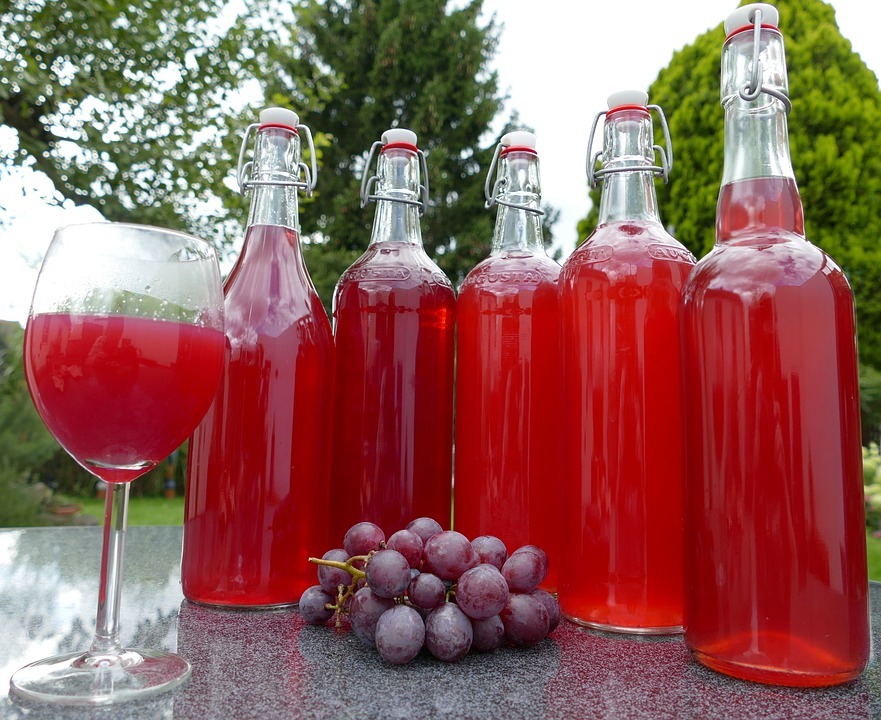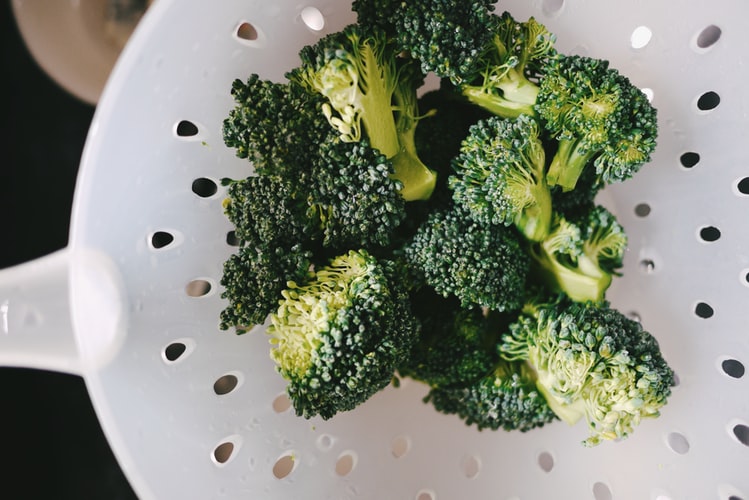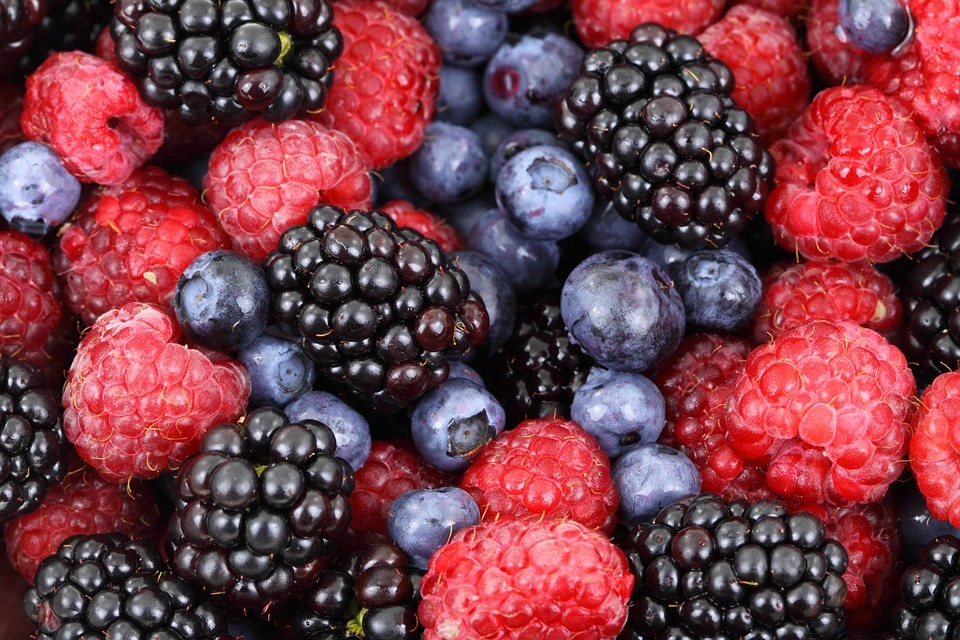Juice and Fiber: The Healthy Connection - Boosting Nutrition Through Smart Combinations
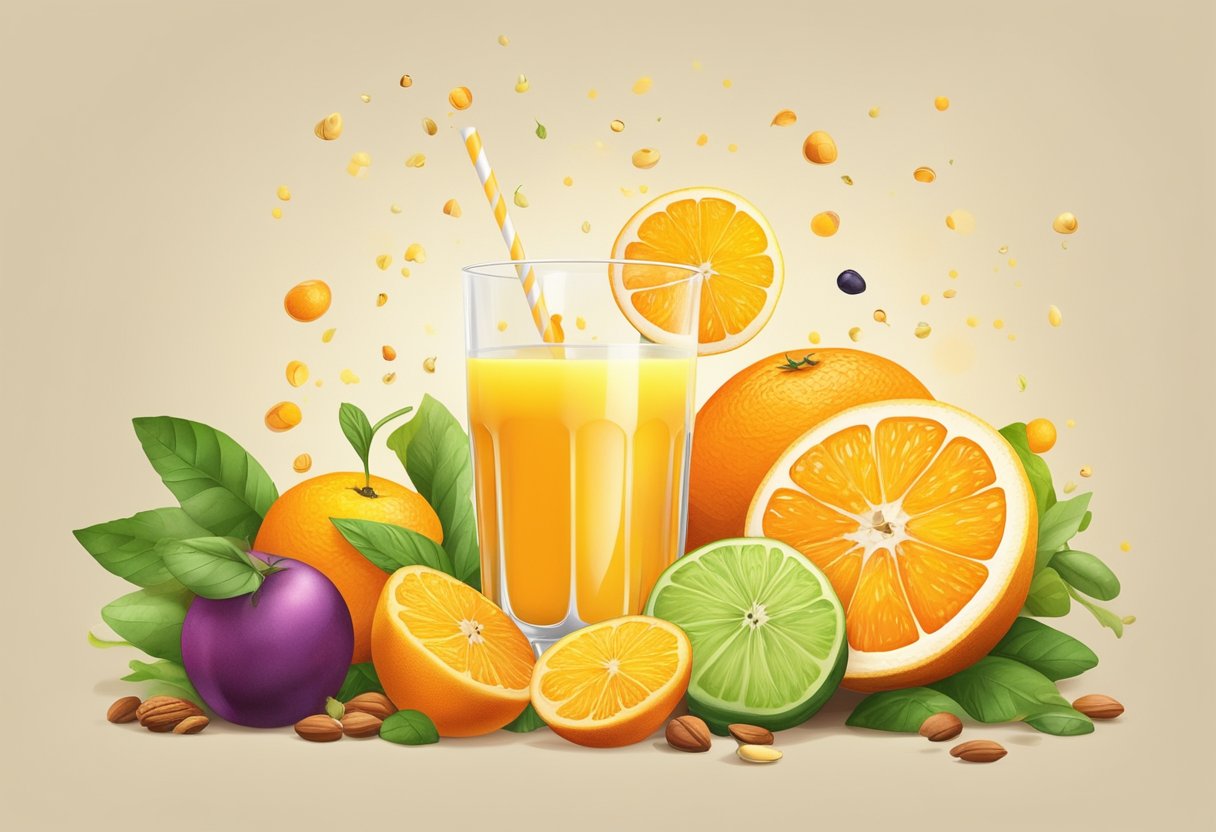
Juice and fiber may seem like an unlikely pair, but they can work together to boost your health. Many people enjoy fruit juices for their taste and vitamins. But juices can also provide fiber, an important nutrient for digestive health.
Drinking fiber-rich juices can help you meet your daily fiber needs while enjoying a tasty beverage. Fiber supports gut health, helps control blood sugar, and aids in feeling full. While whole fruits contain more fiber, some juices still offer a good amount.
Not all juices are equal when it comes to fiber content. Juices made from fruits with edible peels and pulp tend to have more fiber. Pomegranate, prune, and cloudy apple juices are good choices. Adding vegetables to fruit juices can increase fiber too. Picking the right juices can be a tasty way to add more fiber to your diet.
The Role of Juice in a Healthy Diet
Juice can be part of a balanced diet when consumed in moderation. It provides vitamins and minerals but lacks the fiber of whole fruits and vegetables.
Understanding Fruit and Vegetable Juices
Fruit and vegetable juices are made by extracting the liquid from fresh produce. This process keeps many nutrients but removes most of the fiber. Fruit juices tend to be higher in natural sugars and calories than vegetable juices.
Some people find it easier to drink juice than eat whole fruits and vegetables. This can help increase intake of plant-based nutrients. But juice should not fully replace whole produce in the diet.
Juices can provide a quick source of vitamins and minerals. They may be helpful for those who have trouble eating or digesting solid foods.
Vitamins and Minerals in Juice
Juices contain many of the same nutrients found in whole fruits and vegetables. Common vitamins in juices include:
- Vitamin C
- Vitamin A
- B vitamins
- Vitamin E
Juices also provide minerals like potassium, magnesium, and calcium. The exact nutrient content depends on the types of produce used.
Orange juice is high in vitamin C. Carrot juice is rich in vitamin A. Green juices often contain iron and B vitamins.
Some juices are fortified with extra nutrients like calcium or vitamin D. This can help fill nutritional gaps in the diet.
Impact on Blood Sugar and Energy Levels
Fruit juices can cause rapid spikes in blood sugar. This is because the natural sugars are absorbed quickly without fiber to slow digestion.
The sugar rush from juice may give a quick burst of energy. But it's often followed by a crash as blood sugar drops. This can leave you feeling tired or hungry soon after.
Vegetable juices tend to have less impact on blood sugar. They are usually lower in natural sugars than fruit juices.
For steadier energy, pair juice with a source of protein or fat. This helps balance blood sugar levels. Or choose whole fruits and vegetables more often for the benefits of fiber.
Fiber: Why it's Foundational
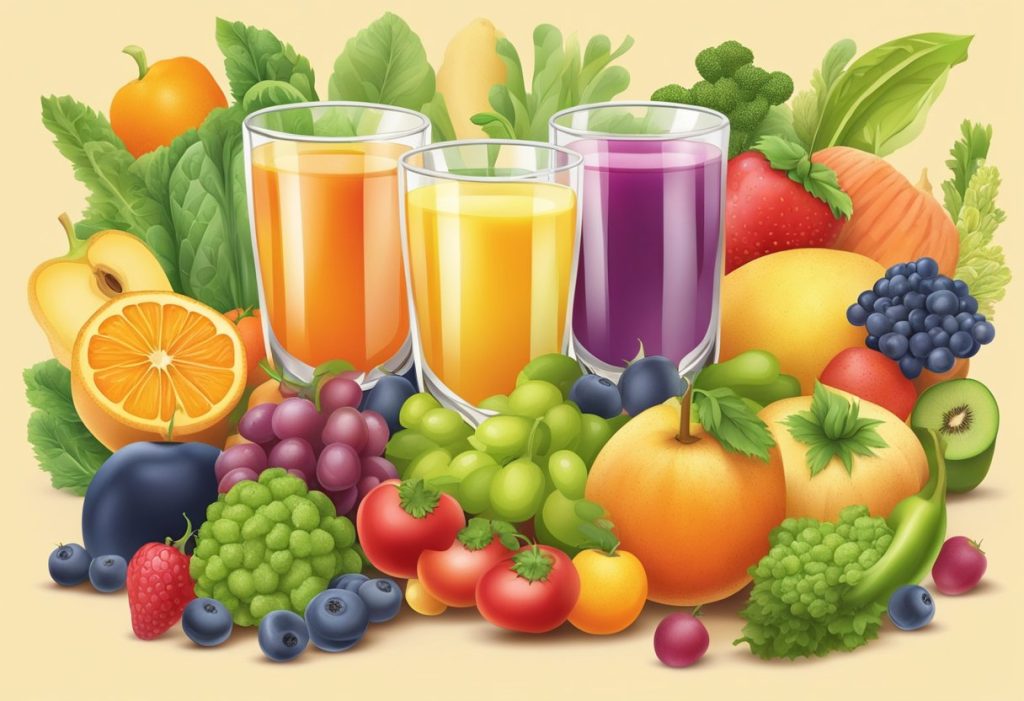
Fiber plays a key role in health and digestion. It comes in two main types and offers many benefits when eaten regularly. Plants provide the best sources of this important nutrient.
Soluble vs. Insoluble Fiber
Fiber comes in two forms - soluble and insoluble. Soluble fiber dissolves in water and forms a gel-like substance. It slows digestion and helps control blood sugar.
Insoluble fiber adds bulk to stool and speeds up digestion. It helps prevent constipation. Most plant foods contain both types, but in different amounts.
Soluble fiber is found in oats, beans, and citrus fruits. Insoluble fiber is in whole grains, nuts, and veggies. Both types are good for health in different ways.
Benefits of High-Fiber Foods
Eating lots of fiber has many health perks. It aids digestion and helps you feel full. This can make it easier to maintain a healthy weight.
Fiber also:
- Lowers cholesterol levels
- Controls blood sugar
- Reduces risk of heart disease
- May help prevent some cancers
Fiber feeds good gut bacteria too. This supports immune health. Getting enough fiber each day is key for feeling your best.
Dietary Sources of Fiber
Plants are the only source of dietary fiber. Good choices include:
- Fruits: apples, berries, pears
- Veggies: broccoli, carrots, Brussels sprouts
- Whole grains: oats, brown rice, quinoa
- Legumes: beans, lentils, peas
- Nuts and seeds: almonds, chia seeds, flaxseed
Aim for a mix of foods to get both soluble and insoluble fiber. Juice can provide some fiber, but whole fruits and veggies are better sources. They have more fiber and nutrients.
Health Benefits of Juicing
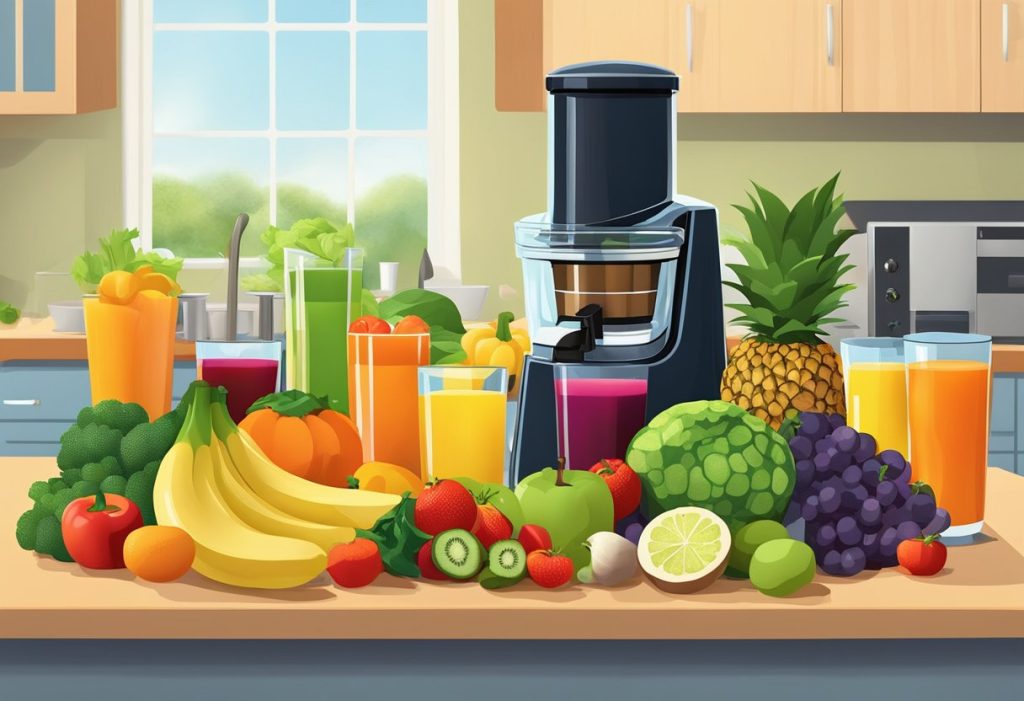
Juicing offers several health advantages by providing a concentrated source of nutrients from fruits and vegetables. It can boost vitamin intake, aid in weight management, and support heart health when done properly.
Nutrient Absorption from Juices
Juicing extracts vitamins, minerals, and plant compounds from fruits and vegetables. This process makes nutrients easier for the body to absorb. Juice contains high levels of antioxidants that fight harmful free radicals. These compounds help protect cells from damage.
Juices are rich in phytonutrients. These plant-based chemicals have health-promoting effects. They can reduce inflammation and boost immune function. Juicing allows people to consume more produce than they might eat whole.
Some juices are especially nutrient-dense. For example, carrot juice is high in beta-carotene. Kale juice provides lots of vitamin K. Citrus juices offer vitamin C.
Juicing for Weight Control and Obesity Prevention
Juice can play a role in weight management when used wisely. Low-calorie vegetable juices may help reduce overall calorie intake. This can support weight loss efforts.
Juice before meals may increase feelings of fullness. This could lead to eating less at mealtimes. Some juice ingredients like ginger may boost metabolism slightly.
It's important to watch portion sizes with fruit juices. They can be high in natural sugars and calories. Vegetable juices are often lower in calories and sugar.
Replacing high-calorie snacks with vegetable juice can aid weight control. Juice shouldn't replace whole fruits and vegetables entirely. Fiber from whole produce helps with feeling full.
Juice and Heart Disease Prevention
Some juices may help lower heart disease risk. They can do this by affecting cholesterol levels and blood pressure. Pomegranate juice has been linked to lower blood pressure in studies.
Beet juice may help reduce blood pressure too. It contains nitrates that improve blood flow. Citrus juices like orange and grapefruit juice contain flavonoids. These compounds may help protect against heart disease.
Vegetable juices are often low in sodium. This can be good for heart health. They're rich in potassium, which helps control blood pressure. Juices from leafy greens provide vitamin K. This nutrient is important for heart health.
Assessing Juice Quality and Making Healthy Choices
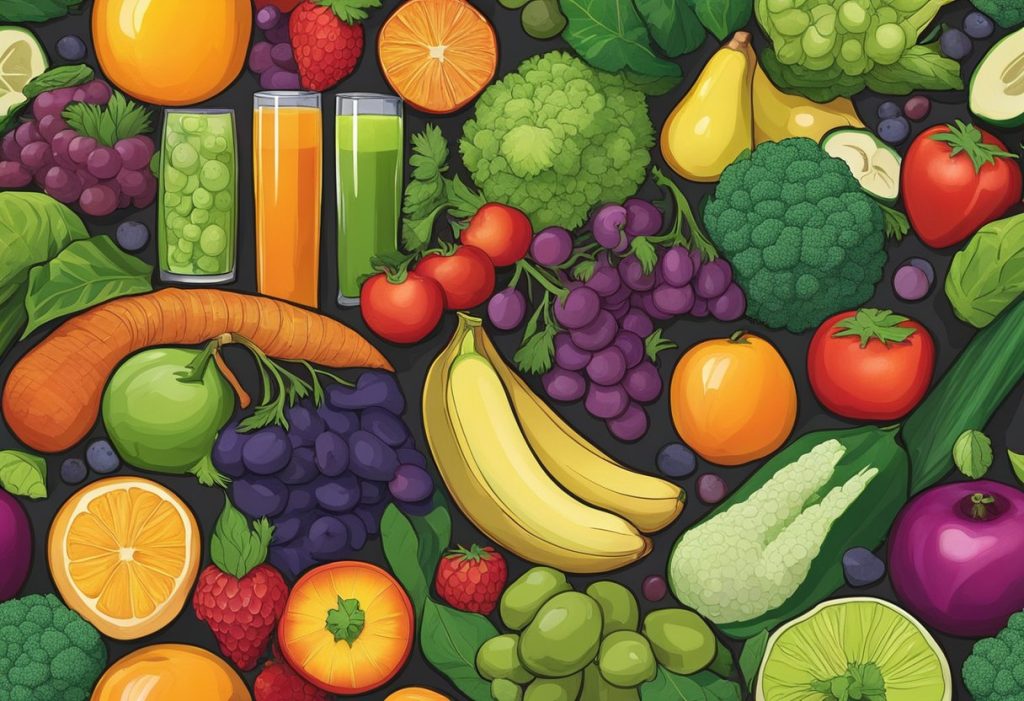
Picking the right juice can be tricky. It's key to know what to look for on labels and how juice stacks up against whole fruits.
Avoiding Added Sugars in Juices
Many juices have extra sugar added to make them taste sweeter. This can quickly bump up the calories without adding nutrition. Check the ingredients list for words like "cane sugar" or "corn syrup."
Look at the "total sugars" and "added sugars" on the label. Pick juices with no added sugars when you can. Some juices mix in water or other juices to cut sugar while keeping flavor.
Don't be fooled by terms like "all-natural" or "no artificial sweeteners." These juices can still have lots of added sugar.
The Sugar Debate: Natural vs. Added Sugars
Fruit has natural sugars. These come with fiber, vitamins, and minerals. Added sugars don't bring these perks.
The body handles both types of sugar the same way. But natural sugars in whole fruit come in smaller amounts. The fiber in fruit also slows down sugar absorption.
Too much of any sugar can lead to weight gain and health issues. Even 100% fruit juice can spike blood sugar fast. This is because juicing removes the fiber that normally slows sugar absorption.
Choosing Whole Fruits and Vegetables Over Juice
Whole fruits and veggies beat juice in many ways. They have more fiber, which helps you feel full. Fiber also feeds good gut bacteria and may lower heart disease risk.
Chewing whole produce takes longer than drinking juice. This can help you eat less overall. Whole fruits and veggies also have helpful compounds that might get lost in juicing.
If you do drink juice, stick to a small glass (4-6 oz). Try mixing juice with sparkling water to cut sugar and calories. Better yet, eat the fruit and drink water instead.
Integrating Juices Into Your Diet
Adding juices to your meals can boost nutrient intake. Smart choices and proper amounts help balance juice with other foods.
Balancing Juices with Solid Foods
Juice shouldn't replace whole fruits and veggies. Drink juice with meals or as a snack between solid foods. This helps control blood sugar and keeps you full.
Mix juice with sparkling water for a lower-calorie drink. Try having a small glass of juice with breakfast or lunch. Pair juice with protein-rich foods like nuts or yogurt for better nutrition.
Avoid drinking only juice all day. This can lead to missing out on important nutrients from other foods.
Creating High Fiber Juice Blends
Make fiber-rich juices at home by blending whole fruits and veggies. Keep the pulp and skins when possible to get more fiber.
Try these high-fiber juice combos:
- Apple + carrot + spinach
- Pear + kale + celery
- Berries + beets + chia seeds
Add ground flaxseed or oats to your juice for extra fiber. Using a blender instead of a juicer keeps more fiber in your drink.
Smoothies are another great way to get fiber from fruits and veggies. They keep all parts of the produce, giving you more nutrients.
Recommended Juice Intakes by Health Experts
Most dietitians suggest limiting juice to 4-8 ounces per day for adults. This amount gives benefits without too much sugar or calories.
Children should drink even less:
- Ages 1-3: up to 4 oz daily
- Ages 4-6: up to 6 oz daily
- Ages 7-18: up to 8 oz daily
Choose 100% fruit or vegetable juices without added sugars. Fresh-squeezed or cold-pressed juices often have the most nutrients.
Drink juice right after making it to get the most vitamins. Some nutrients can break down if juice sits too long.
Juicing Techniques and Tips
Juicing can boost nutrient intake and add variety to your diet. The right methods help keep nutrients intact and create tasty, healthy drinks.
Different Methods of Juicing
Centrifugal juicers use fast-spinning blades to extract juice. They work well for hard fruits and veggies like apples and carrots. Masticating juicers crush produce slowly. This method keeps more nutrients and works better for leafy greens.
Cold press juicers use hydraulic pressure to squeeze out juice. They preserve the most nutrients but are slower and pricier. Blending is another option that keeps all the fiber. It makes thicker drinks called smoothies.
Each method has pros and cons. Pick based on your needs, budget, and favorite produce.
How to Preserve Nutritional Content in Juice
To keep nutrients in juice:
- Drink it right away
- Store in an airtight container
- Keep in the fridge for up to 24 hours
- Add lemon juice to slow oxidation
Wash produce well before juicing. Leave edible peels on for more nutrients. Cut away damaged parts. Rotate produce types to get a range of vitamins and minerals.
Juicing Recipes for Maximum Health Benefits
Try these nutrient-packed combos:
- Green Detox: Kale, cucumber, green apple, lemon
- Immune Booster: Carrot, orange, ginger, turmeric
- Heart Helper: Beet, apple, spinach, lemon
Mix fruits and veggies for balanced flavor and nutrition. Add spices like ginger or cinnamon for extra benefits. Limit high-sugar fruits to keep calories in check.
Start with small amounts of strong flavors like kale or ginger. Adjust to taste. Experiment to find your favorite blends.
Risks and Considerations
Drinking juice can have some risks. It's smart to know about these and take steps to stay healthy. Let's look at key things to keep in mind when adding juice to your diet.
Managing Fructose Intake from Juices
Fruit juices have a lot of fructose, a type of sugar. Too much fructose can cause health problems. It may raise blood sugar levels fast. This can be bad for people with diabetes. Fructose might also lead to weight gain if you drink too much juice.
To stay safe, limit juice intake. Adults should drink no more than 1 cup (8 ounces) per day. Kids should drink even less. Pick whole fruits more often. They have fiber, which slows down sugar absorption.
Spread out juice drinks during the day. This helps your body handle the sugar better. Water down juice to cut sugar content. Mix it with sparkling water for a tasty, lower-sugar drink.
Interaction with Medications and Health Conditions
Some juices can affect how medicines work. Grapefruit juice is known for this. It can make some drugs stronger or weaker. This includes some heart and anxiety meds.
People with certain health issues should be careful with juice. Those with kidney problems may need to avoid high-potassium juices. This includes orange and tomato juice.
If you have acid reflux, citrus juices might make it worse. Apple and grape juice are better choices. People with IBS may find some juices upset their stomach.
Always tell your doctor about the juices you drink. They can help you avoid any bad interactions with your meds or health issues.
When to Consult a Registered Dietitian
A dietitian can help you make smart choices about juice. They know how juice fits into a healthy diet. See a dietitian if you:
- Have diabetes or pre-diabetes
- Are trying to lose weight
- Have digestive issues
- Take medications that might interact with juices
- Want to improve your overall diet
Dietitians can make a meal plan that includes the right amount of juice for you. They'll look at your health, likes, and needs. They can also suggest other ways to get nutrients from fruits and veggies.
If you're not sure about your juice intake, it's best to ask. A dietitian can give you clear, personal advice. This helps you enjoy juice safely as part of a balanced diet.

